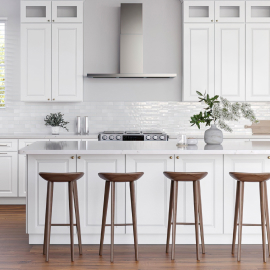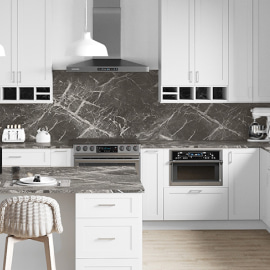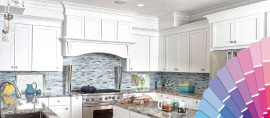
The kitchen is the heart of the home—a space where meals are prepared, conversations unfold, and memories are made. Among all the elements that define a kitchen, cabinets stand out as one of the most important investments. They determine your kitchen’s layout, style, and storage capabilities. Whether you’re building your dream kitchen or upgrading an outdated design, this comprehensive guide will help you make informed decisions when choosing your kitchen cabinets.
Step 1: Evaluate Your Kitchen Layout and Workflow
Your cabinet choice should start with the layout of your kitchen. Think about how you use your space every day. Are you a frequent cook who needs maximum storage? Or do you prefer an open-plan kitchen that prioritizes aesthetics and social interaction?
The ideal layout should follow the kitchen work triangle—the efficient path between the sink, stove, and refrigerator. Base and wall cabinets should support this workflow by placing essentials within easy reach while optimizing storage zones around key activity centers.
Step 2: Understand the Different Types of Kitchen Cabinets
Each kitchen cabinet serves a unique purpose. Familiarizing yourself with the standard types can help you create a balanced design.
- Base Cabinets: Installed on the floor, these are the workhorses of kitchen storage, supporting countertops and housing large items like pots, pans, and appliances.
- Wall Cabinets: Mounted on the wall above the countertop, they’re ideal for plates, glasses, spices, and smaller items.
- Tall Cabinets: Also known as pantry or utility cabinets, these full-height units offer extra storage space for bulk items, cleaning supplies, or small appliances.
You can also incorporate specialty cabinets like corner lazy Susans, pull-out trays, or built-in microwave cabinets to further customize your layout.
Step 3: Choose a Cabinet Door Style That Reflects Your Vision
Cabinet doors are the most visible part of your cabinetry, so selecting the right style is essential for defining your kitchen’s personality. Here are some of the most popular options:
- Shaker: Clean lines and recessed panels make this style perfect for both traditional and modern kitchens.
- Raised Panel: These add depth and elegance, often used in classic or transitional designs.
- Slab/Flat Panel: A sleek, minimalist look ideal for contemporary or European-style kitchens.
- Beadboard: Adds texture and charm, great for farmhouse or cottage kitchens.
At CabinetSet.com, you’ll find a wide selection of styles including our popular white shaker cabinets, rustic oak finishes, and elegant matte black options.
Step 4: Consider Cabinet Construction and Materials
Durability matters. The materials used in your cabinets determine how well they’ll hold up over time—especially in a high-traffic kitchen environment.
- Solid Wood: Timeless and durable, but more expensive.
- Plywood: Lightweight, strong, and resistant to warping—ideal for cabinet boxes.
- MDF: Smooth and consistent, perfect for painted finishes.
- Particleboard: Budget-friendly, though less moisture-resistant.
Also, pay attention to construction details like dovetail joints, soft-close hinges, and full-extension drawer glides, which contribute to long-term performance and user satisfaction.
Step 5: Select a Color That Complements Your Style
Color is more than just a finishing touch—it sets the mood of your kitchen. While white cabinets remain a timeless choice, more homeowners are embracing bolder hues and natural wood tones.
- White: Clean, versatile, and brightens up small spaces.
- Gray: Modern, neutral, and pairs well with many countertops.
- Black or Navy: Dramatic and sophisticated; works best in well-lit kitchens.
- Green or Blue: Adds personality and a connection to nature.
- Wood Tones: From light oak to deep walnut, wood finishes bring warmth and texture.
You can even mix and match for a two-tone look—like dark base cabinets with lighter uppers—for added visual interest.
Step 6: Don’t Overlook Cabinet Hardware and Accessories
The right hardware and accessories elevate both form and function.
- Hardware: Knobs and pulls in finishes like brushed nickel, matte black, or brass can subtly tie your kitchen design together.
- Functional Add-ons: soft-close doors and drawers, waste container pullouts, spice organizers and tray dividers, roll-out shelves, built-in drawer lighting
Final Tips for a Successful Cabinet Purchase
- Take Measurements Carefully: Always measure twice before ordering to avoid costly mistakes.
- Order Samples: See colors and finishes in person to ensure they match your vision.
- Consult with a Designer: Many companies offer free design services to help you maximize your space.




